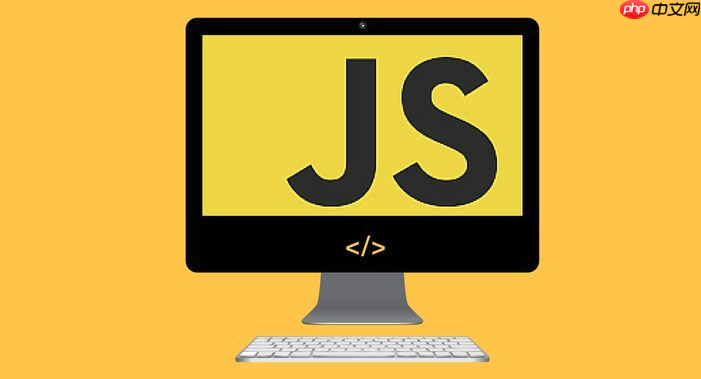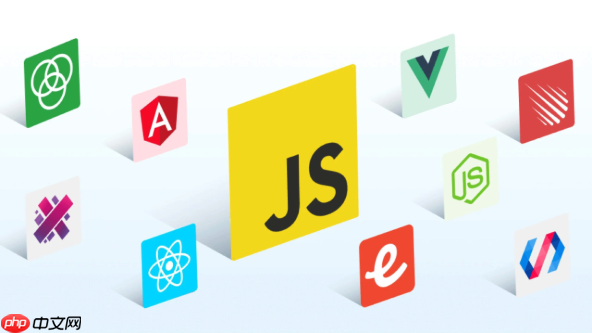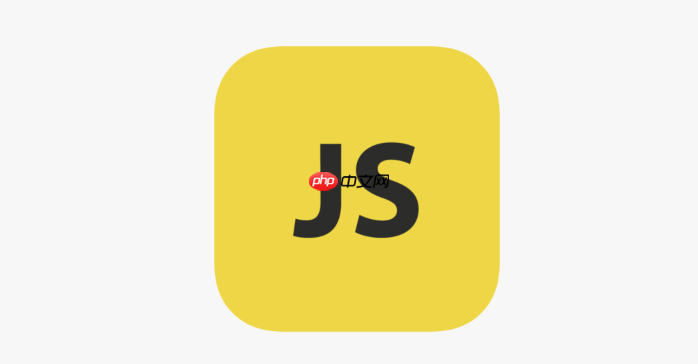异步操作中的竞态条件可通过同步机制解决。1.使用锁确保同一时间只有一个任务访问共享资源;2.采用原子操作保障简单数据修改的完整性;3.通过消息队列串行化操作避免并发冲突;4.利用事务保证多步骤操作的一致性;5.实施乐观锁在更新时检测冲突并重试;6.使用不可变数据结构防止数据被意外修改。

异步操作中的竞态条件,说白了,就是多个异步任务抢着访问和修改同一份数据,结果因为执行顺序的不确定性,导致最终结果跟你预期的不一样。这就像几个人同时往一个银行账户里存钱或取钱,如果没做好同步,账户余额就可能出错。

理解这一点后,处理方法其实就围绕着“同步”二字展开。
解决异步操作中的竞态条件

解决异步操作竞态条件的核心在于确保对共享资源的访问是同步的,即同一时刻只有一个异步操作可以修改共享资源。以下是一些常见的解决方案:
锁是最直接的同步机制。在访问共享资源之前,先获取锁;访问完毕后,释放锁。这样可以保证同一时刻只有一个异步操作持有锁,从而避免竞态条件。

import asyncio
import threading
class AsyncLock:
def __init__(self):
self._lock = threading.Lock()
self._waiters = []
async def acquire(self):
loop = asyncio.get_event_loop()
future = loop.create_future()
with self._lock:
if not self._waiters:
self._waiters.append(future)
return
self._waiters.append(future)
await future
def release(self):
with self._lock:
if self._waiters:
future = self._waiters.pop(0)
future.set_result(None)
lock = AsyncLock()
async def critical_section(task_id):
await lock.acquire()
try:
print(f"Task {task_id}: Entered critical section")
await asyncio.sleep(1) # 模拟耗时操作
print(f"Task {task_id}: Exiting critical section")
finally:
lock.release()
async def main():
tasks = [asyncio.create_task(critical_section(i)) for i in range(3)]
await asyncio.gather(*tasks)
if __name__ == "__main__":
asyncio.run(main())
这个例子展示了一个简单的异步锁的实现,并在一个关键区域中使用它来防止竞态条件。注意,这里的锁是为了演示概念,实际生产环境中可能需要更健壮的实现。
对于简单的数值或布尔值的修改,可以使用原子操作。原子操作保证操作的完整性,不会被其他线程或协程中断。 Python 的 atomic 模块(需要安装)提供了一些原子操作的实现。
import asyncio
import atomic
counter = atomic.AtomicCounter(0)
async def increment_counter(task_id):
for _ in range(1000):
counter.inc()
#await asyncio.sleep(0) # 模拟并发,去掉注释可能更容易观察到竞态条件(如果没用原子操作)
print(f"Task {task_id}: Counter incremented")
async def main():
tasks = [asyncio.create_task(increment_counter(i)) for i in range(5)]
await asyncio.gather(*tasks)
print(f"Final counter value: {counter.value}")
if __name__ == "__main__":
asyncio.run(main())这个例子使用 atomic.AtomicCounter 来保证计数器递增操作的原子性,即使多个协程同时执行,最终结果也是正确的。
将共享资源的修改操作放入消息队列,然后由一个单独的消费者线程或协程从队列中取出消息并执行。这样可以将并发的修改操作串行化,避免竞态条件。
import asyncio
import queue
message_queue = queue.Queue()
async def producer(task_id):
for i in range(10):
message = f"Message from task {task_id}: {i}"
message_queue.put(message)
print(f"Task {task_id}: Produced message {message}")
await asyncio.sleep(0.1)
async def consumer():
while True:
message = message_queue.get()
print(f"Consumer: Received message {message}")
message_queue.task_done() # Important! Indicate that a formerly enqueued task is complete
await asyncio.sleep(0.2)
async def main():
tasks = [asyncio.create_task(producer(i)) for i in range(3)]
consumer_task = asyncio.create_task(consumer())
await asyncio.gather(*tasks)
await message_queue.join() # Wait until all items in the queue have been gotten and processed
consumer_task.cancel()
if __name__ == "__main__":
asyncio.run(main())这个例子使用 queue.Queue 作为消息队列,生产者协程将消息放入队列,消费者协程从队列中取出消息并处理。 message_queue.task_done() 和 message_queue.join() 的使用确保了所有消息都被处理。
如果涉及到多个步骤的修改操作,可以将这些操作放入一个事务中。事务保证操作的原子性,要么全部成功,要么全部失败。
(由于事务通常与数据库操作紧密相关,这里提供一个概念性的示例,不包含具体的数据库连接代码)
async def transfer_funds(from_account, to_account, amount):
try:
# Start transaction (hypothetical)
await start_transaction()
# Debit from_account
await debit_account(from_account, amount)
# Credit to_account
await credit_account(to_account, amount)
# Commit transaction (hypothetical)
await commit_transaction()
print(f"Successfully transferred {amount} from {from_account} to {to_account}")
except Exception as e:
# Rollback transaction (hypothetical)
await rollback_transaction()
print(f"Transaction failed: {e}")这个例子展示了一个资金转移的事务,如果任何一个步骤失败,整个事务都会回滚,保证数据的一致性。
乐观锁假设并发冲突的概率很低,因此不会在读取数据时加锁。而是在更新数据时,检查数据是否被其他线程或协程修改过。如果被修改过,则放弃更新并重试。
# (Simplified example - in real-world scenarios, this would typically be implemented with a database)
import asyncio
class DataStore:
def __init__(self, initial_value):
self.value = initial_value
self.version = 0
async def update(self, updater):
original_value = self.value
original_version = self.version
new_value = updater(original_value)
# Simulate checking for updates (in a real system, this would involve checking a version number in the database)
await asyncio.sleep(0.1) # Simulate latency
if self.version != original_version:
print("Conflict detected! Retrying...")
return False # Indicate failure to update
self.value = new_value
self.version += 1
print(f"Updated value to {self.value}, version {self.version}")
return True # Indicate successful update
data_store = DataStore(100)
async def task(task_id):
success = False
while not success:
success = await data_store.update(lambda x: x + 1)
print(f"Task {task_id} completed")
async def main():
tasks = [asyncio.create_task(task(i)) for i in range(3)]
await asyncio.gather(*tasks)
if __name__ == "__main__":
asyncio.run(main())这个例子展示了一个简单的乐观锁的实现。每次更新数据时,都会检查数据的版本号是否被修改过。如果被修改过,则放弃更新并重试。
不可变数据结构在创建后不能被修改。每次修改都需要创建一个新的数据结构。这样可以避免竞态条件,因为每个线程或协程都操作的是自己的数据副本。
from dataclasses import dataclass
@dataclass(frozen=True)
class ImmutableData:
value: int
async def modify_data(data, task_id):
new_data = ImmutableData(data.value + 1)
print(f"Task {task_id}: Modified data to {new_data}")
return new_data
async def main():
data = ImmutableData(10)
tasks = [asyncio.create_task(modify_data(data, i)) for i in range(3)]
results = await asyncio.gather(*tasks)
# Note: Each task creates a *new* ImmutableData instance. The original 'data' remains unchanged.
print(f"Original data: {data}")
for i, result in enumerate(results):
print(f"Task {i} result: {result}")
if __name__ == "__main__":
import asyncio
asyncio.run(main())这个例子使用 dataclasses.dataclass(frozen=True) 创建了一个不可变数据结构。每次修改数据时,都会创建一个新的 ImmutableData 实例。
选择哪种解决方案取决于具体的场景和需求。
不一定。有些竞态条件可能不会导致明显的错误,但仍然会影响程序的正确性。例如,多个线程同时增加一个计数器,即使最终结果是正确的,也可能存在中间状态不正确的情况。因此,应该尽量避免竞态条件,即使它们看起来不会导致错误。
测试竞态条件比较困难,因为它们通常只在特定的并发情况下才会出现。一种常用的方法是使用压力测试,模拟大量的并发请求,观察程序是否出现错误。另一种方法是使用专门的并发测试工具,例如 ThreadSanitizer,它可以检测程序中的竞态条件。 还可以通过增加 asyncio.sleep() 语句来人为地增加并发冲突的可能性,更容易发现潜在的竞态条件。
当然有。 还有一些更高级的技术,例如使用 Actor 模型、CSP (Communicating Sequential Processes) 等,它们可以提供更强的并发控制能力。 选择哪种技术取决于具体的应用场景和需求。 重要的是理解竞态条件的本质,并选择合适的工具和技术来避免它们。
以上就是如何处理异步操作中的竞态条件的详细内容,更多请关注php中文网其它相关文章!

每个人都需要一台速度更快、更稳定的 PC。随着时间的推移,垃圾文件、旧注册表数据和不必要的后台进程会占用资源并降低性能。幸运的是,许多工具可以让 Windows 保持平稳运行。

Copyright 2014-2025 https://www.php.cn/ All Rights Reserved | php.cn | 湘ICP备2023035733号